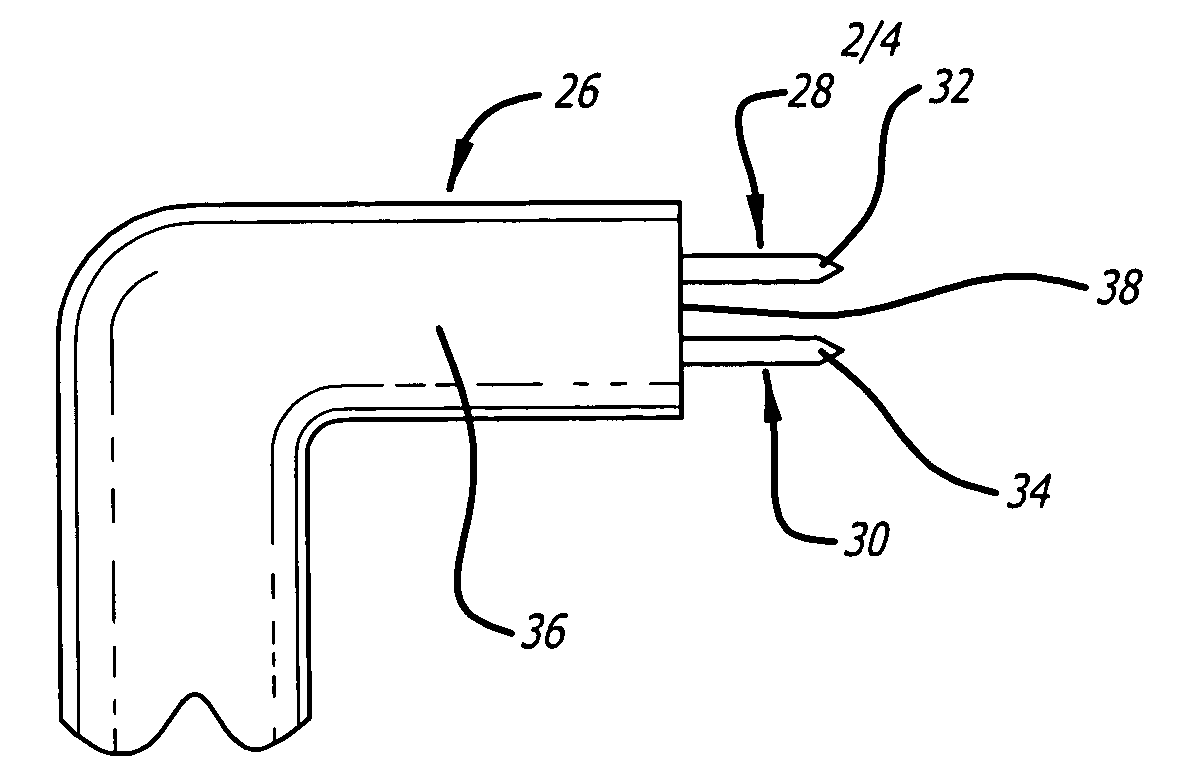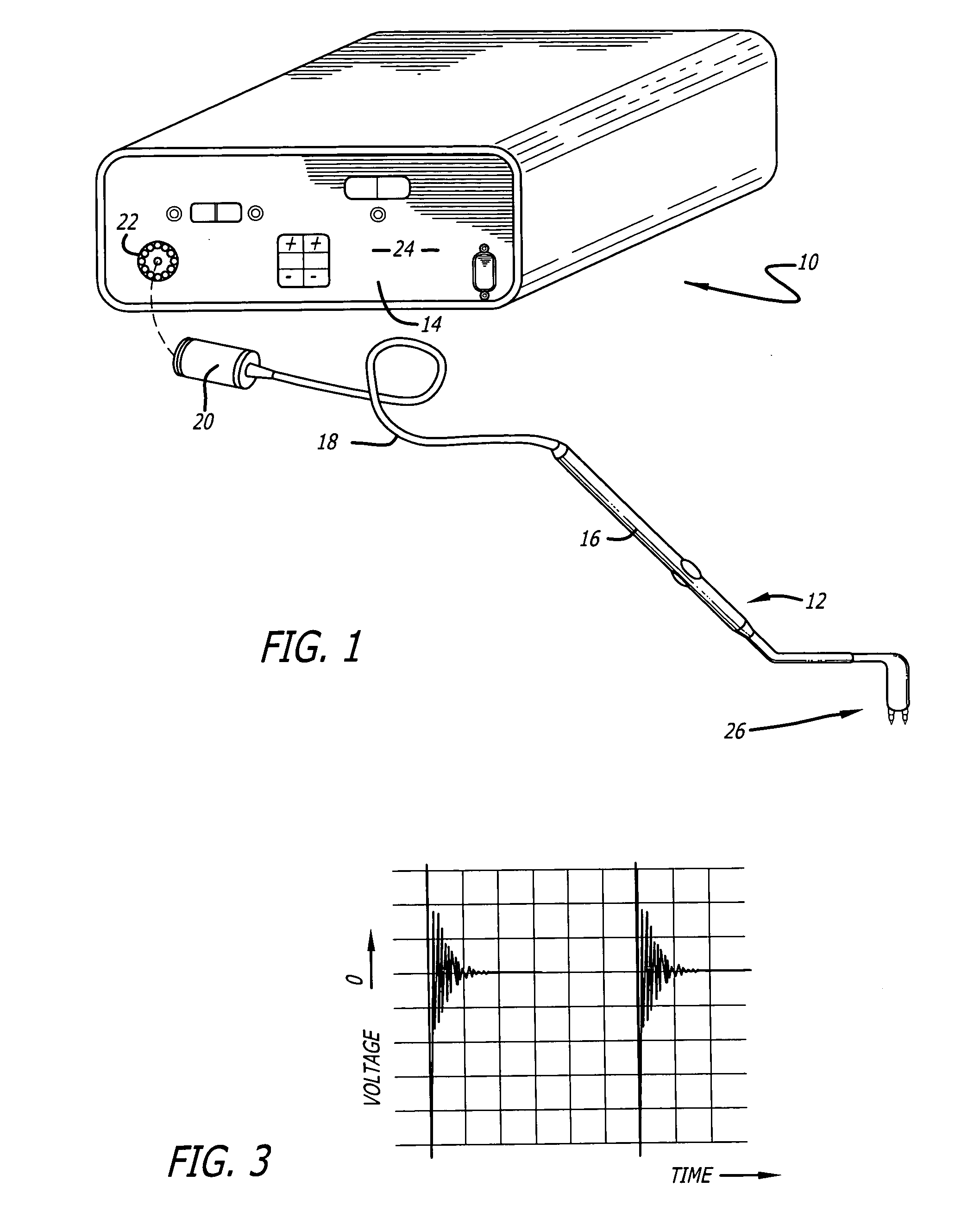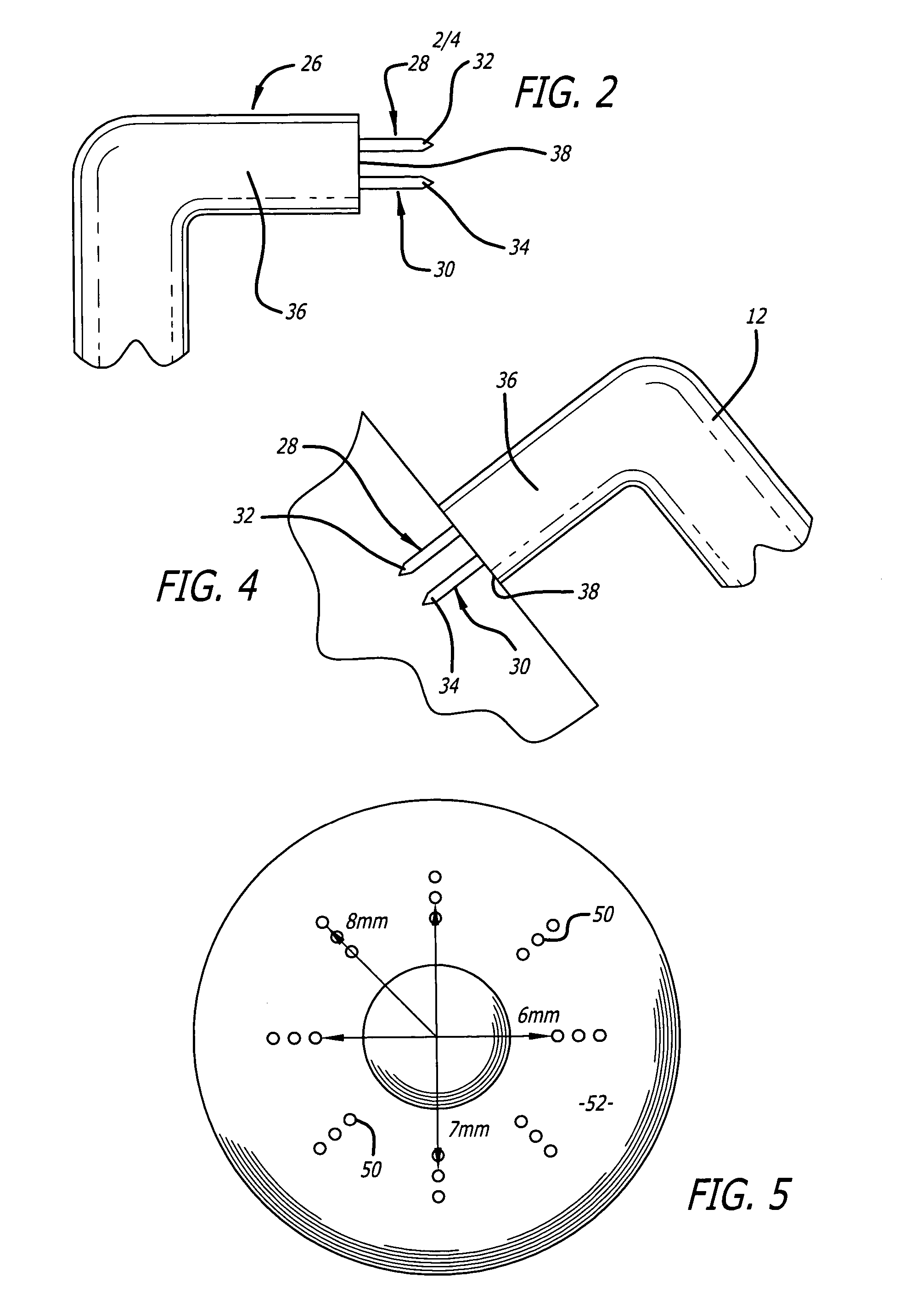Multi-tip probe used for an ocular procedure
a multi-tip probe and ocular technology, applied in the field of ocular tissue treatment methods and equipment, can solve the problems of glaring effect in the visual field, permanent damage to the eye, and risk of puncturing the descemets membrane and the endothelium layer,
- Summary
- Abstract
- Description
- Claims
- Application Information
AI Technical Summary
Problems solved by technology
Method used
Image
Examples
Embodiment Construction
[0028] Disclosed is an apparatus and method for denaturing corneal tissue. The apparatus includes a first electrode and a second electrode that are both inserted into a cornea. The electrodes are coupled to a power unit that delivers energy sufficient to denature corneal tissue. The dual electrode assembly allows for the creation of multiple denatured spots with a single application of energy. Additionally, the multi-electrode assembly provides uniform spacing between the denatured spots.
[0029] Referring to the drawings more particularly by reference numbers, FIG. 1 shows an embodiment of an apparatus 10 that can be used to denature corneal tissue. The apparatus 10 includes an electrode probe 12 coupled to a console 14. The console 14 contains a power supply that can deliver electrical power to the probe 12. The probe 12 has a hand piece 16 and wires 18 that couple the probe electrode to a connector 20 that plugs into a mating receptacle 22 located on the front panel 24 of the cons...
PUM
 Login to View More
Login to View More Abstract
Description
Claims
Application Information
 Login to View More
Login to View More - R&D
- Intellectual Property
- Life Sciences
- Materials
- Tech Scout
- Unparalleled Data Quality
- Higher Quality Content
- 60% Fewer Hallucinations
Browse by: Latest US Patents, China's latest patents, Technical Efficacy Thesaurus, Application Domain, Technology Topic, Popular Technical Reports.
© 2025 PatSnap. All rights reserved.Legal|Privacy policy|Modern Slavery Act Transparency Statement|Sitemap|About US| Contact US: help@patsnap.com



